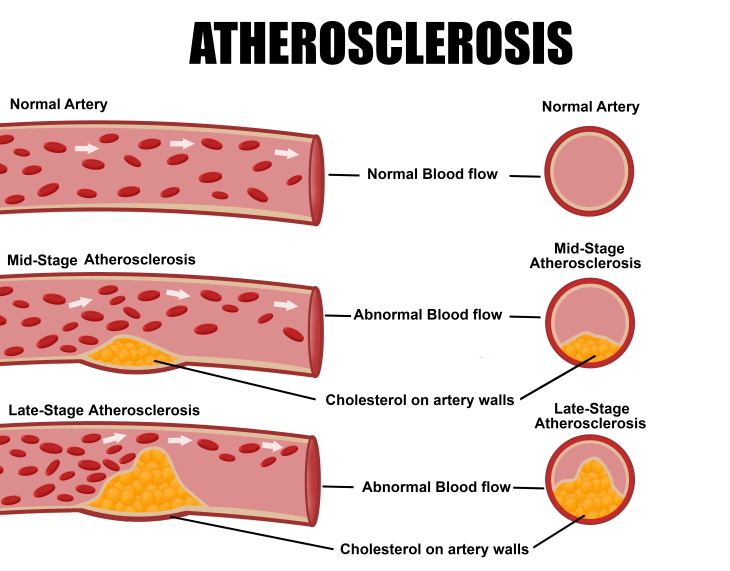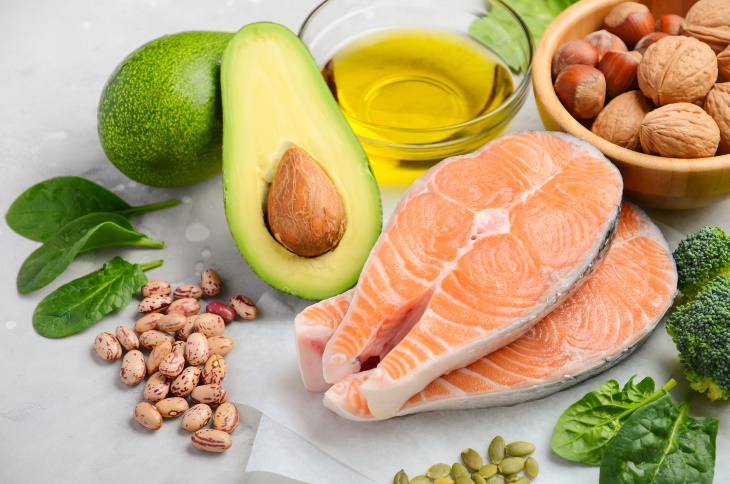Cholesterol - When to Get Tested and How to Read a Test
High cholesterol can lead to serious,
potentially lethal complications, and getting tested is paramount for
detecting cardiovascular health risks early. Still, there’s a lot of
confusion around cholesterol level testing. When should you begin and
how often should you get your cholesterol levels tested? We review the
ways cholesterol levels influence your health, how to get them checked,
and how to interpret the results in this helpful guide.
What is cholesterol?
What is cholesterol?
Cholesterol is a waxy substance that either
comes from food or is produced by the liver. Cholesterol is essential
for the human body to produce bile acid, vitamin D, healthy new cells,
and hormones. If all cholesterol was to suddenly vanish from someone’s
body, they would not survive.


In order to transport cholesterol through
the blood vessels, the body uses special proteins called lipoproteins.
Low-density lipoprotein (LDL) and high-density lipoprotein (HDL) are the
two main ones, and they impact our health differently:
LDL (also known as “bad” cholesterol) carries cholesterol from the
liver to the cells. LDL is often called “bad” because high levels of it
build up in the blood vessels and raise the risk of cardiovascular
disease.
HDL (also known as “good” cholesterol) takes the cholesterol back to
the liver. The liver helps remove cholesterol from the body, so it
reduces one’s risk of cardiovascular issues.
Overall, cholesterol isn’t harmful, but a
sedentary lifestyle and overeating made it so that it is. It’s really a
“too much of a good thing” scenario exemplified.
When cholesterol levels
are high, this raises your risk of atherosclerosis, stroke, heart
attack, and other cardiovascular issues.
As Dr. Robert Greenfield explained in an article for Medical News Today,
“Our bodies weren’t designed to live in an environment where food was
in excess, and so when cholesterol is in excess, it will be deposited in
our body. And that deposit center can often be our blood vessels, and
that’s when it’s bad for us.”
When and How often should you get tested?
The biggest culprits behind high
cholesterol are foods like meat, poultry, dairy, palm oil, and coconut
oil. Highly processed foods, such as baked goods, processed meat, and
store-bought sweets are high in saturated and trans fats, which make the
liver produce greater amounts of cholesterol than needed as well.
When and How often should you get tested?
There is no one-size-fits-all approach when
it comes to cholesterol level testing. If you are at low risk for heart
disease, testing should begin at age 20 and be followed up every 5
years. However, those who have a family history of high cholesterol,
heart disease, diabetes, and obesity should start getting their
cholesterol levels checked earlier according to the Centers for Disease
Control and Prevention (CDC).
You will also need to be screened for
cholesterol more often if you’re at a greater risk of high cholesterol.
“You should get a yearly blood test if your cholesterol is high,” said
Dr. Sanjiv Patel, a board-certified interventional cardiologist.

How to Deal with High Cholesterol
The CDC also recommends that children and
adolescents have their cholesterol levels checked once in the age range
of 9-11 years, and once again between 17-21 years old.
Your family physician will help you estimate when and how often you need
to get the cholesterol test done. The test itself is simple: you go to
your physician and ask them to order a lipid panel (also known as a
complete cholesterol test or lipid profile).
This is a blood test that measures the amount of cholesterol and
triglycerides in your blood according to Mayo Clinic. The physician will
refer you to get the blood test done, and once you complete it, all you
have to do is wait for the results.
How to Read a Cholesterol Test
Cholesterol levels are measured in
milligrams per deciliter (mg/dL). Depending on your age, the normal
range changes. For different ages, healthy cholesterol levels are as
follows:
Everyone 19 years or younger: total cholesterol below 170 mg/dL, LDL
- below 100 mg/dL, HDL - above 45 mg/dL.
Men 20 or older: total cholesterol - 125-200 mg/dL, LDL - below 100
mg/dL, HDL - 40 mg/dL or higher.
Women 20 or older: total cholesterol - 125-200 mg/dL, LDL - below
100 mg/dL, HDL - 50 mg/dL or higher.
Furthermore, the American Heart Association and the American College of
Cardiology also suggest that LDL levels of 100 mg/dL or less are
optimal. People whose cholesterol levels are in this range have lower
rates of heart disease and stroke.
Other measurements on a cholesterol test include triglycerides, a type
of fat in the blood. In adults, triglyceride levels should be less than
150 mg/dL.
Some tests will also show you the levels of
Very Low-Density Lipoprotein (VLDL) - one of the most dangerous types
of blood lipids. Not all tests contain VLDL levels, as this measure is
merely calculated by assuming that VLDL levels make up 20% of
triglyceride levels. Another reason why it may be omitted is that this
measurement is NOT taken into account in the treatment of elevated
cholesterol.
Can Your Cholesterol Level Be Too Low?
We already discussed the repercussions of high cholesterol, but is
having low levels of this waxy substance good or bad? To answer briefly,
one’s total cholesterol level can never be too low. But once you
distinguish between LDL and HDL cholesterol, the picture becomes more
nuanced.
Low HDL Cholesterol Levels
When the HDL levels drop below 40 mg/dL in men and 50 mg/dL in women,
the risk of atherosclerosis (hardening of the arteries), heart attack,
and stroke climb astronomically. That’s because HDL cholesterol is an
antioxidant responsible for clearing the other, bad kind of cholesterol
from the body and preventing clogged arteries.
A diet high in carbohydrates can also lower one’s HDL levels while
raising LDL and triglycerides by 30-40% according to previous studies.
Certain medications, health conditions (kidney disease, metabolic
syndrome, liver disease, diabetes), as well as smoking, and undereating
can also lead to a reduction in HDL levels.
Low HDL Cholesterol Levels
Counterintuitively, critically low LDL levels may not be the best
outcome either. We need LDL cholesterol to build cells, make hormones
(including estrogen, progesterone, and testosterone), and keep the brain
healthy. So, eliminating it from the body completely isn’t a good idea.
In most cases, low LDL levels are a sign of either mismatched
cholesterol-lowering medication or serious underlying health conditions,
such as cancer, liver disease, and severe malnutrition.
That being said, having LDL levels so low that this becomes a problem -
below 25 mg/dL - is incredibly rare. Such negative outcomes have mainly
been observed in pregnancy, causing hormonal imbalances that could harm
the baby.

How to Deal with High Cholesterol
Unless you suffer from an underlying
genetic or acquired condition that specifically causes elevated
cholesterol levels, this blood measurement is within your control. You
can lower your cholesterol levels by tweaking your lifestyle. The CDC
recommends the following lifestyle changes to manage your cholesterol:
Eliminate foods high in trans fats, and lower your intake of
saturated fats, salt, and sugar.
Instead, switch your focus to foods
high in fiber, healthy fats, and fresh fruit and vegetables.
Moderate exercise for at least 150 minutes. This can include
cycling, swimming, or even brisk walking.
Consider quitting smoking if you do. Smoking damages blood vessels.
You may also consider vitamin supplementation to help normalize your LDL
and HDL levels. Some people take vitamin E and vitamin A for their
cholesterol. It’s best to discuss with your physician if this approach
is right for you. Your doctor will also help you get that cholesterol
down with medication if the lifestyle changes aren’t helping.
This is only for your information, kindly take the advice of your doctor for medicines, exercises and so on.
https://gscrochetdesigns.blogspot.com. one can see my crochet creations
https://gseasyrecipes.blogspot.com. feel free to view for easy, simple and healthy recipes
https://kneereplacement-stickclub.blogspot.com. for info on knee replacement
https://cancersupportindia.blogspot.com for infor on cancer and health related topics
https://GSiyers home remedies.blogspot.com is the latest addition to my blogs. I'm going to add posts there, do give me your valuable feed back on my blogs. Thanks a lot, take care, be healthy and be happy.
https://gscrochetdesigns.blogspot.com. one can see my crochet creations
https://gseasyrecipes.blogspot.com. feel free to view for easy, simple and healthy recipes
https://kneereplacement-stickclub.blogspot.com. for info on knee replacement
https://cancersupportindia.blogspot.com for infor on cancer and health related topics
https://GSiyers home remedies.blogspot.com is the latest addition to my blogs. I'm going to add posts there, do give me your valuable feed back on my blogs. Thanks a lot, take care, be healthy and be happy.
Labels: cholesterol-when tested, eliminate foods high in transfats, fresh fruits n veges, HDL, healthy fats, high fiber, how to read test, LDL, lower intake of saturated fats, moderate exercise, salt n sugar

0 Comments:
Post a Comment
<< Home